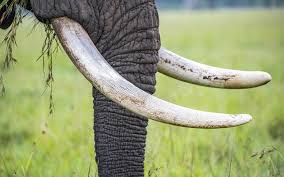The global ban on ivory trade, established by the Convention on International Trade in Endangered Species (CITES) in 1989, has left Zimbabwe with a substantial burden of over 130 tonnes of ivory stockpiled in the vaults of the Zimbabwe Parks and Wildlife Management Authority (Zimparks), valued at more than US$600 million.
During a recent signing ceremony in Chizarira National Park, Zimparks director general Fulton Mangwanya highlighted the issue, stating that the stockpile continues to grow due to natural elephant mortality and population management challenges.
With Zimbabwe hosting one of the largest elephant populations in the world over 80,000 elephants many of which reside in Hwange National Park, which far exceeds its carrying capacity, the situation has become increasingly untenable.
In response to this crisis, authorities have proposed a controversial plan to cull 200 elephants, arguing that the initiative aims to support hunger-stricken communities surrounding the game parks.
Despite facing criticism from conservationists regarding these actions, Mangwanya affirmed that the government must prioritize the needs of its people over external opinions.
He stated, “As a sovereign state, we have to do what is good for our nation,” emphasizing a commitment to find practical solutions amidst escalating challenges.
The increasing elephant population, compounded by the inability to profit from the ivory, has sparked a complex debate on wildlife management and its implications for both conservation and community welfare.
SOURCE : NEWSREPORTZIM.COM









